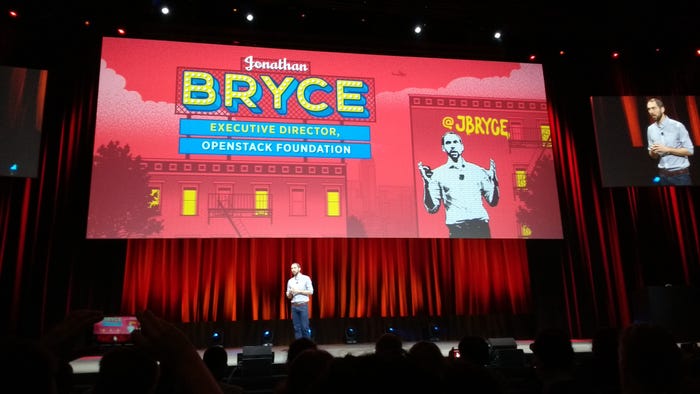Speaking at the Openstack Summit, the Openstack Foundation’s Executive Director Jonathan Bryce threw another buzzword into the mix for us to consider; multi-cloud.
October 26, 2016

Speaking at the Openstack Summit, the Openstack Foundation’s Executive Director Jonathan Bryce threw another buzzword into the mix for us to consider; multi-cloud.
While the technology industry is seemingly awash with buzzwords and the latest trends, the Openstack Foundation has pinned its future on the development of a multi-cloud culture. While it may sound similar to a hybrid proposition, multi-cloud not only takes into account the different topologies, but also different vendor platforms, all working seamlessly in a perfect world.
“The future is absolutely going to be multi-cloud,” said Bryce. “Users don’t really care about what the technology is or where it came from, they just want it to work for them.
“When you look at the scale and when you look at the variety of demands on the industry, the future has to be multi-cloud.”
Scale is something the technology industry is used to, but we’re very rapidly entering into an age where a tsunami of information and data is set to swallow us. CERN’s Tim Bell estimated civilization had produced 5,000 petabytes of data since the dawn of time, but this number is about to be dwarfed. In 2010, 5,000 petabytes of data was produced every two days, and this number is only getting bigger.
Cambridge University was another to showcase its talents at the Summit, specifically in the form of its Square Kilometre Array (SKA) project. The SKA is a new radio telescope project, currently in the design study phase, which will have sensitivity 100 times greater than the most sensitive radio telescopes of the present generation, and an ability to survey the sky up to 1 million times faster. The project will take place over two sites in South Africa and Australia.
Once the project is launched in the near future, it will collect 5,000 petabytes a day, and in ten years, this number will increase to 100,000 petabytes per day. This is a single project, from a single organization. Considering how other organizations will increase their appetite for data, the growth is almost unimaginable.
For Bryce, only a multi-cloud environment will meet this demand. It’s not a single network, but a software-defined, distributed network, which does not limit the customer to a single vendor or platform.
This is not however limited to those nasty corporate giants which the Openstack Foundation seem to be very happy to smear in an effort to promote its own platform, as Bryce admits Openstack is not the ultimate answer to every challenge. There will be requirements for engineers to look into Kubernetes or OPNFV or the Cloud Foundry, but this is the approach which will define the multi-cloud culture and the positive sum gain.
So forget about everything else, multi-cloud is where it’s at.

About the Author(s)
You May Also Like








.png?width=300&auto=webp&quality=80&disable=upscale)


_1.jpg?width=300&auto=webp&quality=80&disable=upscale)


.png?width=800&auto=webp&quality=80&disable=upscale)